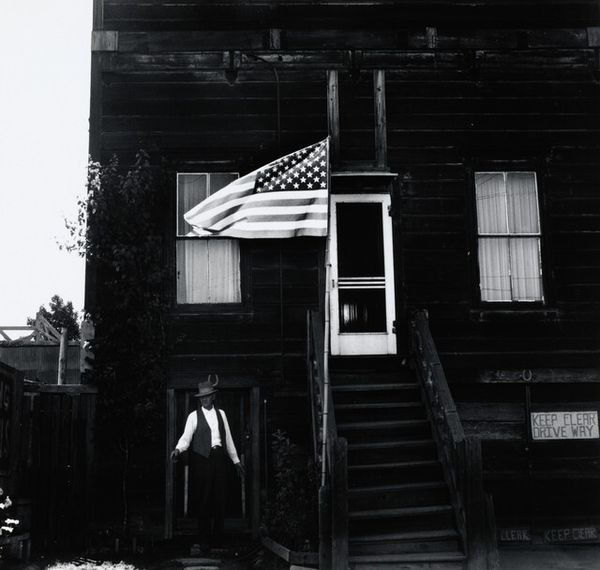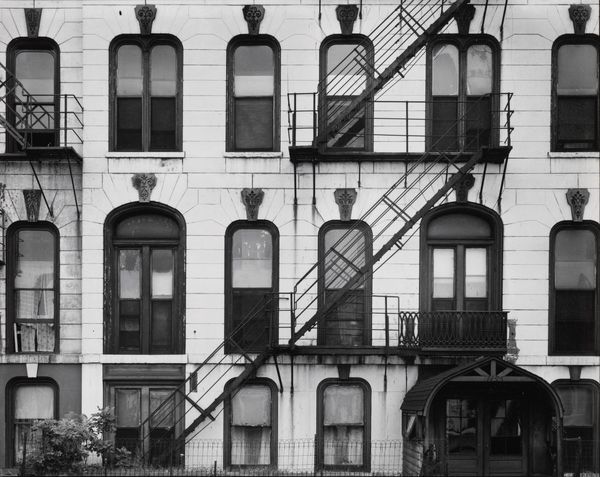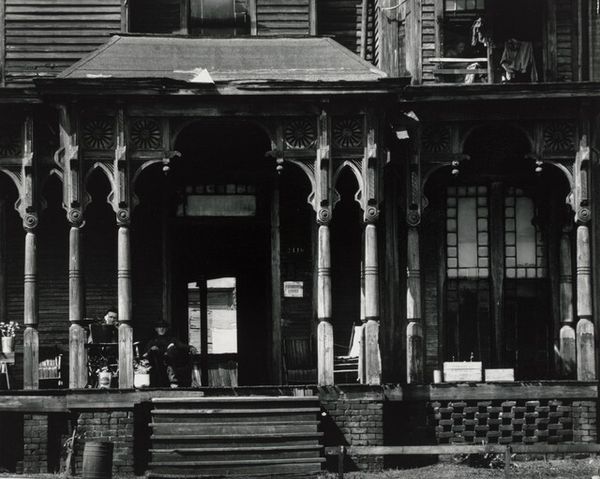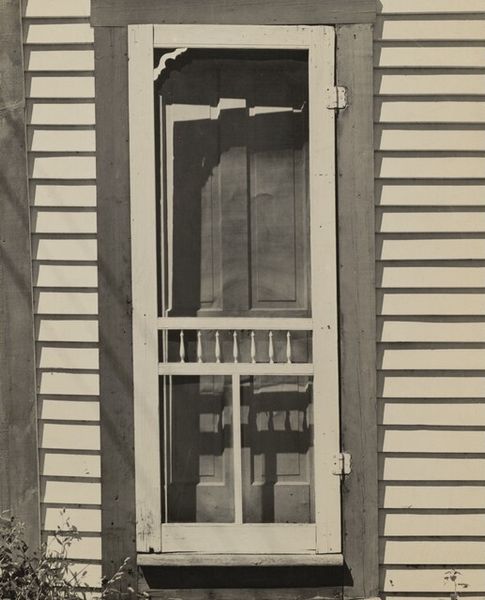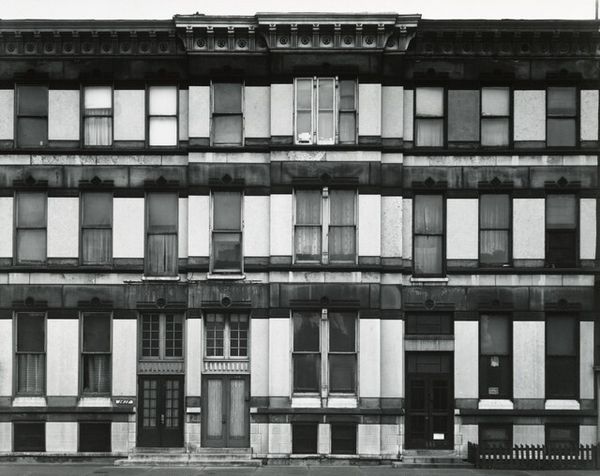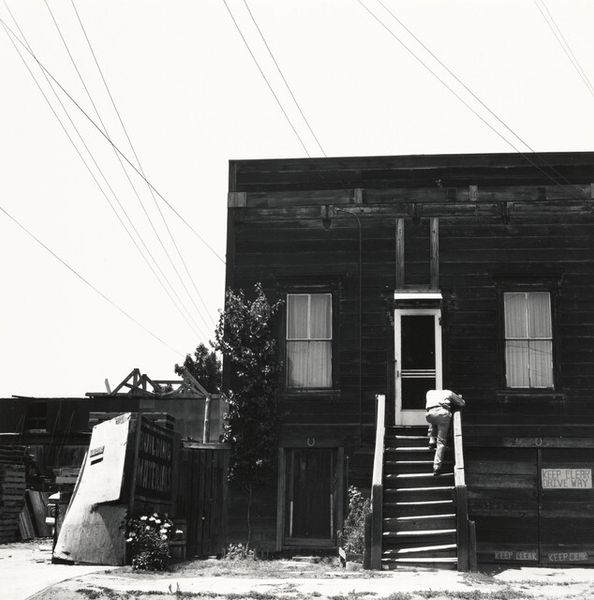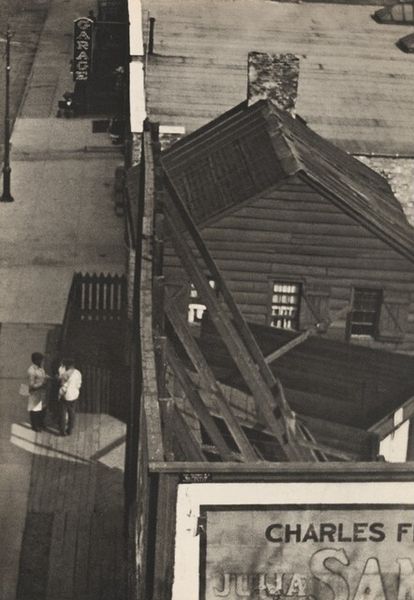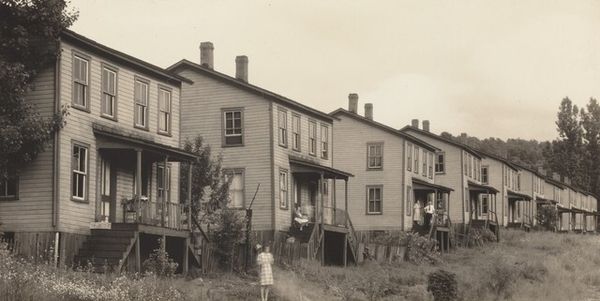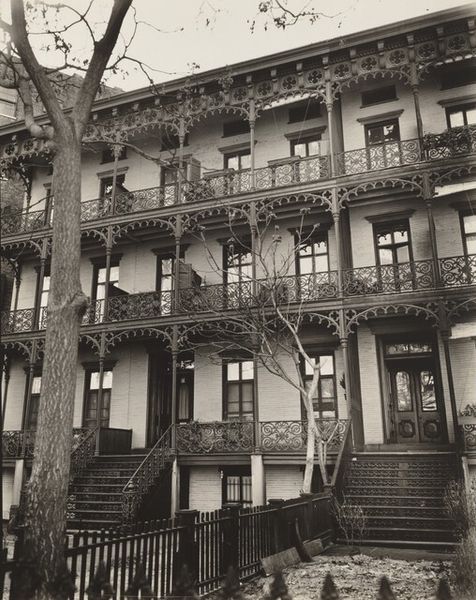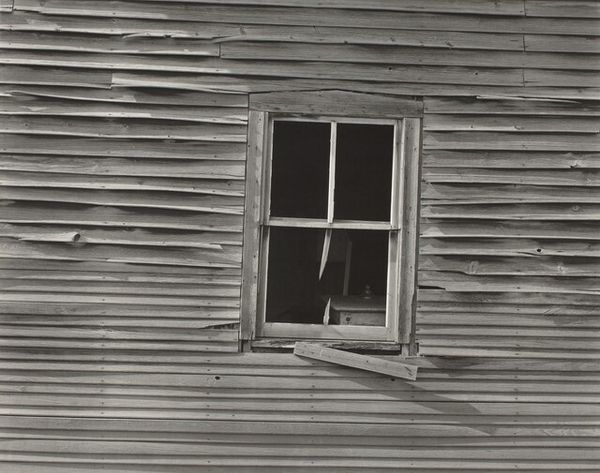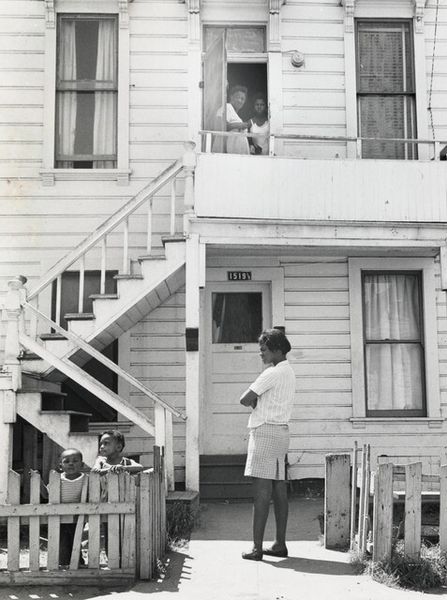
Dimensions: image: 41.8 × 36.5 cm (16 7/16 × 14 3/8 in.)
Copyright: National Gallery of Art: CC0 1.0
Editor: This photograph, “Tenement House, Ansonia, Connecticut” by Gordon Parks, from 1949, it’s stark. The repeating balconies, the people looking out... it feels very… exposed. What can you tell me about this work? Curator: Parks created this image as part of a photo essay on poverty in America. Seeing it now, we can consider how it functions within a longer tradition of social documentary photography and its role in shaping public perception. This was during a period when visual media became increasingly powerful. What strikes you about the composition? Editor: Well, there's the building itself – very boxy and symmetrical. The balconies create a sort of layered effect, but it’s also very stark and…plain. The people are just *there*. Do you think that contrast was deliberate? Curator: Absolutely. Parks isn't just showing us the people, but how their lives are structured, confined, by socio-economic forces. He frames them *within* this architecture of poverty, calling attention to the limitations of their environment, the politics of imagery inherent to such documentation. This isn't just observation; it's a carefully constructed commentary. Editor: So, you're saying he's not just capturing reality but making an argument about the system? Curator: Exactly. And what arguments can this tell us? He wants us to confront uncomfortable truths. Does seeing it today alter this understanding? Editor: Definitely. Knowing that this was consciously created to make a statement shifts everything. I thought it was a snapshot, but it’s much more. Curator: Understanding the history, and the intent of images helps us see it better in all levels. This wasn’t only a time capsule, but a critique for the future.
Comments
No comments
Be the first to comment and join the conversation on the ultimate creative platform.

